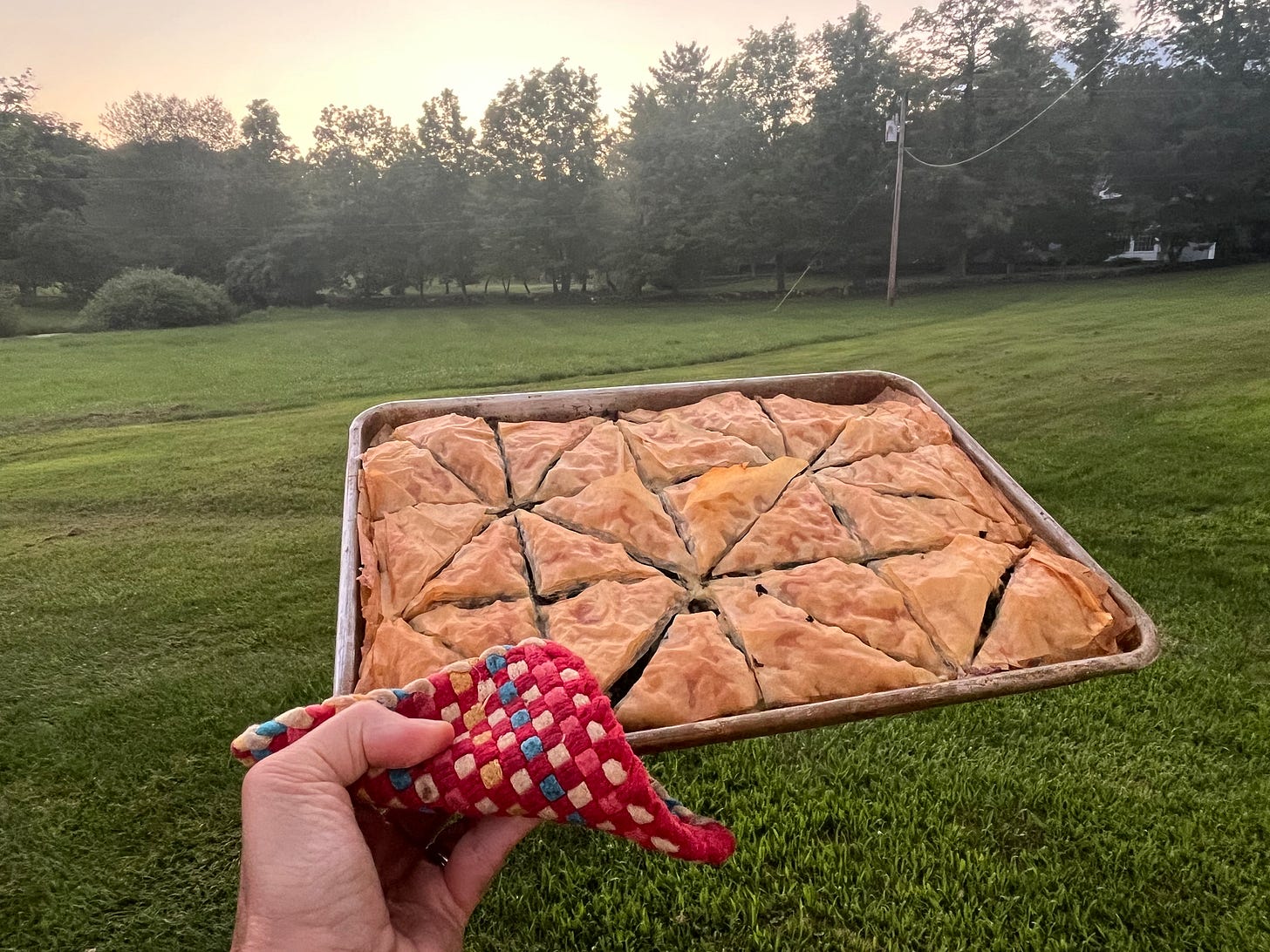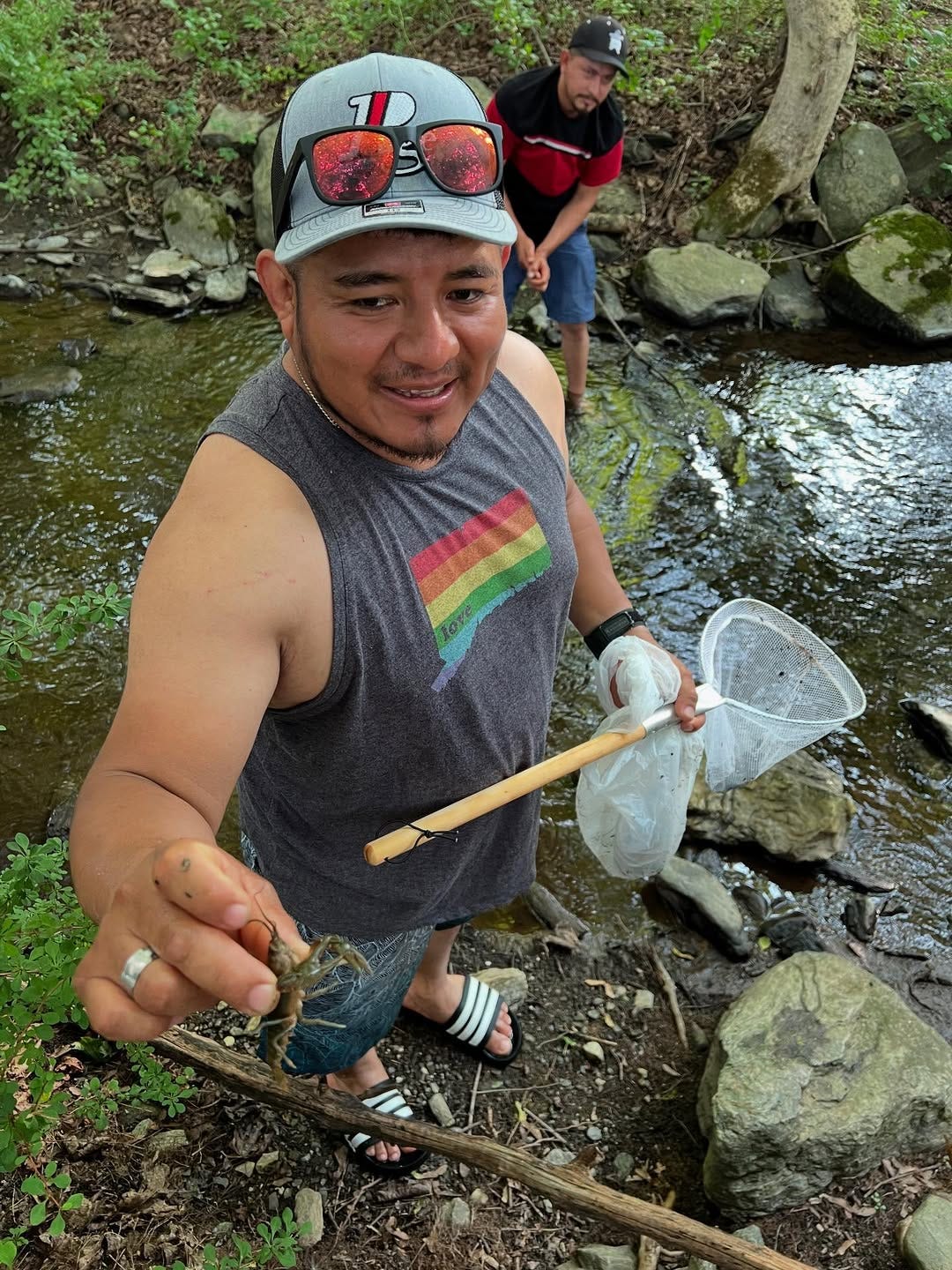On Pie and Memory
Plus a church where you can catch your dinner
When I was 15, my dad got me a job working in the office of his Wall Street brokerage firm. This was clearly a “what are we going to do with this kid?” move. There was not anything specific for me to do; I spent the first week in an empty conference room refiling files, which I did wrong and had to do again, then gophering for a half-dozen back office ladies who lived on Staten Island and were bawdy and funny in ways I’d never seen; I sometimes recall a bleached blonde secretary stamping her heels all over a bill she was mailing in late, in order that it looked as though it had been lost in the mail. I wasn’t a very good employee, in that I skipped out on several Fridays and went to the beach, simply not ready to accept that I was not allowed a summer vacation. In my defense, I think it was the first and last time I was a half-assed employee.
It’s summer now, and I am out of the city pretty much full-time. Being able to work from anywhere is a privilege, and it turns out there is also time, in the late afternoons, to drive 25 or 40 miles in this or that direction to see what’s around. Yesterday, this included a stop at Edward R. Murrow Park in Pawling, where we ate raspberries off the vine and took a walk around a lake, during which gnats feasted on my eyeballs.
On the way home, we saw a sign for Dover Stone Church, a place both majestic and the opposite of precious; there are people bathing in the stream as you hike up and men catching crawdads. And then you pass into the mouth of the “church” and pick your way along the thankfully-not-slimy rocks until you are inside the cavern wondering how Sassacus found this place and how many people have hidden here and if the cavern was formed by falling rock or water erosion and how long it will hold as a place to treat ceremoniously or simply as a place to catch dinner.
Dinner for us last night was homemade spanakopita, which I grew up making with my half-Greek mother, who, as I write this, lies sleeping in the house next door. Thirteen months ago, just before I was feeding her water with an eye dropper, I wrote about her leaving.
The Slow Leave Taking: On Watching My Mother Slip Away
I’d like to introduce you to my mother. Not the woman I am sitting one foot away from in a Connecticut hospital bed, the skin on her hands as fragile as phyllo dough, the veins showing livid purple and the blue-green of old tattoos. Though it is true, her hands have always been this way.
There have been a half-dozen dips and rebounds since, and in the past few weeks, a deepening sleep. The Greek god of sleep is Hypnos, and my mother does seem to me hypnotized, or did until a few days ago, when she would still look my way, clock who I was, and smile before being pulled back to wherever she goes. I cannot know how many more times she is going to open her eyes, but I will walk over some spanakopita later today. A reminder.
Spanakopita
I small yellow onion, chopped
2 sticks salted butter, divided
2 10-ounce packages frozen spinach, thawed and thoroughly drained
2 eggs
12 ounces feta cheese, crumbled
8 ounces phyllo dough, thawed
In a skillet, melt 4 TB butter. Add chopped onion and saute over medium heat until softened and just starting to brown. Add spinach and mix.
Beat eggs in a bowl, add spinach and onion, then feta. Set aside.
Melt remaining 1.5 sticks butter.
Unroll phyllo dough and set it to the side of a 9 x 12 inch baking sheet. Brush baking sheet with melted butter, lay down a sheet of phyllo dough, and repeat with next 8 or 9 sheets, brushing each layer with better. (Video below offers some tips.) When you have about ten layers, spread with spinach mixture, and repeat process with next ten layers of phyllo and butter.
Cover pan and refrigerate at least an hour. Once firm, cut into triangles or squares, and bake in a preheated 400-degree oven for about 45 minutes, until puffed and crisped. Unbaked spanakopita freezes exceptionally well. Do not thaw before baking in a 370-degree oven for at least an hour and likely closer to 90 minutes.





